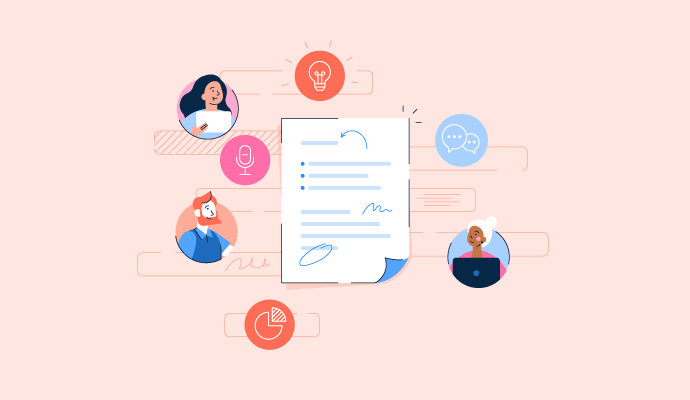What are release notes?
Release notes are written technical documents with details on new software products or updates. They let development teams communicate new product modifications or features to end users and internal employees.
Release notes contain a brief overview of any changes the development team made, along with helpful hints on navigating new features or improvements. Typically written by the product manager or a technical writer, release notes show that the company strives for continuous improvement and transparency.
Companies turn to release notes management software to draft, publish, and distribute release notes. This software also automatically notifies customers when new release notes are available.
Basic elements of release notes
Companies vary in their approach to writing release notes, but they generally strive for organization and clarity. Release notes typically include the following information:
- Header. The team includes the product name, version number, and release date so users can keep track of release notes and refer to them in communication with the company.
- Overview. Release notes offer a summary of key changes in the release to give users a basic understanding of what to expect.
- New features and fixes. In this section, release notes describe any new functionalities, enhancements, and bug or issue fixes. Often, they mention if the team added a feature based on user requests.
- Impact. Release notes highlight how they benefit the users or enhance their experience. They also explain why the team made changes.
- Known issues. A release note often mentions limitations or problems that the product still has. This lets users know that the development team recognizes and plans to address them.
- Additional resources. Sometimes, the development team includes links to relevant resources like tutorials or manuals that users might find helpful.
Benefits of release notes
Although a short document, release notes offer several benefits to developers and users. Some of them include:
- Building product excitement. Release notes drum up excitement for a product. Hearing about new features or functionalities might get inactive users to engage with the product again.
- Providing transparency. Software and app users like to be kept in the loop. Release notes give them clear visibility into product changes and help foster a sense of trust and openness between the developers and users.
- Improving the user experience. Telling users about new updates helps them to take full advantage of the product’s features and improves their overall experience. This can help increase retention, as fully engaged customers have more of a reason to stay.
- Increase team alignment. When the development team shares release notes internally, other departments, like marketing or sales, understand the product’s latest improvements. Then, they can plan blog content around the new release or refer to new features as a selling point.
Ways to distribute release notes
Organizations need a plan for sharing release notes with customers. A well-written release note has no value if no one sees it. Some common methods for distributing release notes to a wide swath of customers include:
- Email. Many users provide an email address when purchasing a product. Email is a quick way for companies to reach their users if they usually have a good open rate.
- Web page. Companies can add a ‘What’s New?’ page to their site. That way, customers have a go-to location to look for the latest product updates and release notes.
- Blog. Organizations with an active blog on their website can publish the release notes there. However, a blog post sometimes gets buried as the company publishes new content, so they should also use other channels.
- SMS or text. For some organizations, SMS provides another way to reach customers. While an entire release notes document is too long to fit in a single message, they can link a web page or blog post.
- Social network platforms. Posting regular content on social media builds community and rapport with customers and provides another channel for communicating essential information. Plus, non-users may stumble upon the message and find that the product offers exactly what they need.
Best practices for writing release notes
When done well, release notes can make a big impact on users. Organizations should follow these best practices:
- Keep it clear and concise. Users have varying degrees of technical knowledge. While some industry jargon may be unavoidable, organizations should limit its use. Instead, they should strive for simple language.
- Apply formatting. By bolding certain lines or using bullet points, the team makes the release notes easy to skim and understand.
- Show personality. Some people view release notes as ‘dry’ because they’re about technical topics. When companies use their brand voice or personality, these documents become more engaging to readers. Adding photos or GIFs when appropriate helps, too.
Make sure your brand identity shines through in your release notes with these tips.

Kelly Fiorini
Kelly Fiorini is a freelance writer for G2. After ten years as a teacher, Kelly now creates content for mostly B2B SaaS clients. In her free time, she’s usually reading, spilling coffee, walking her dogs, and trying to keep her plants alive. Kelly received her Bachelor of Arts in English from the University of Notre Dame and her Master of Arts in Teaching from the University of Louisville.





















